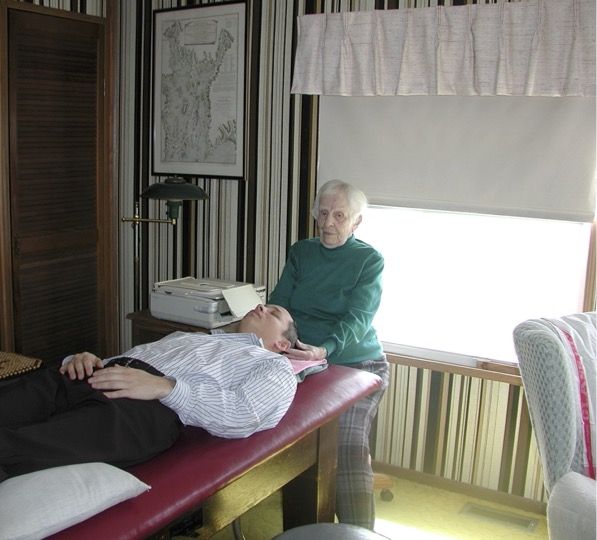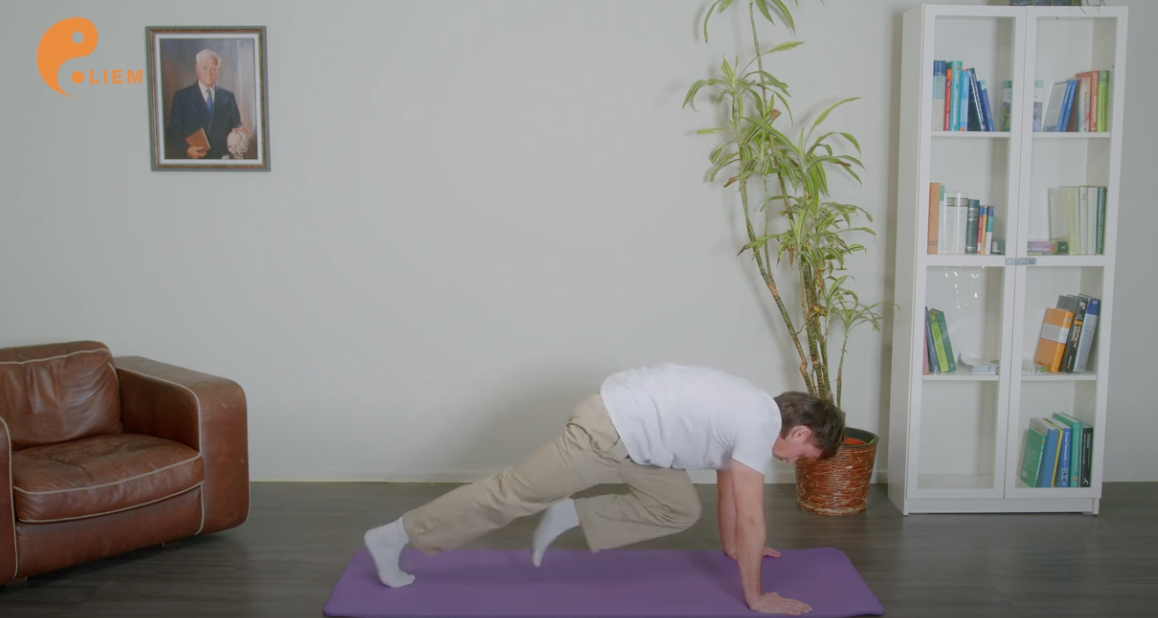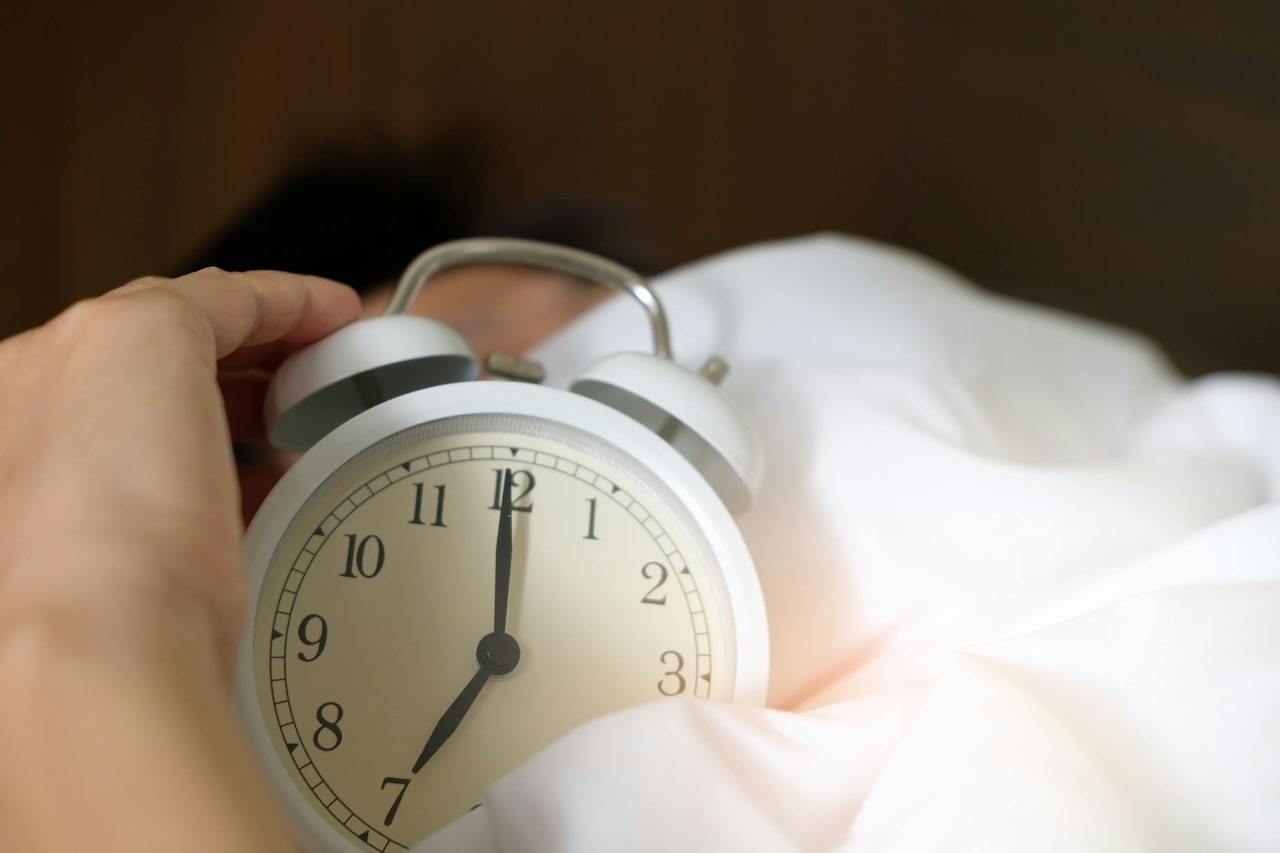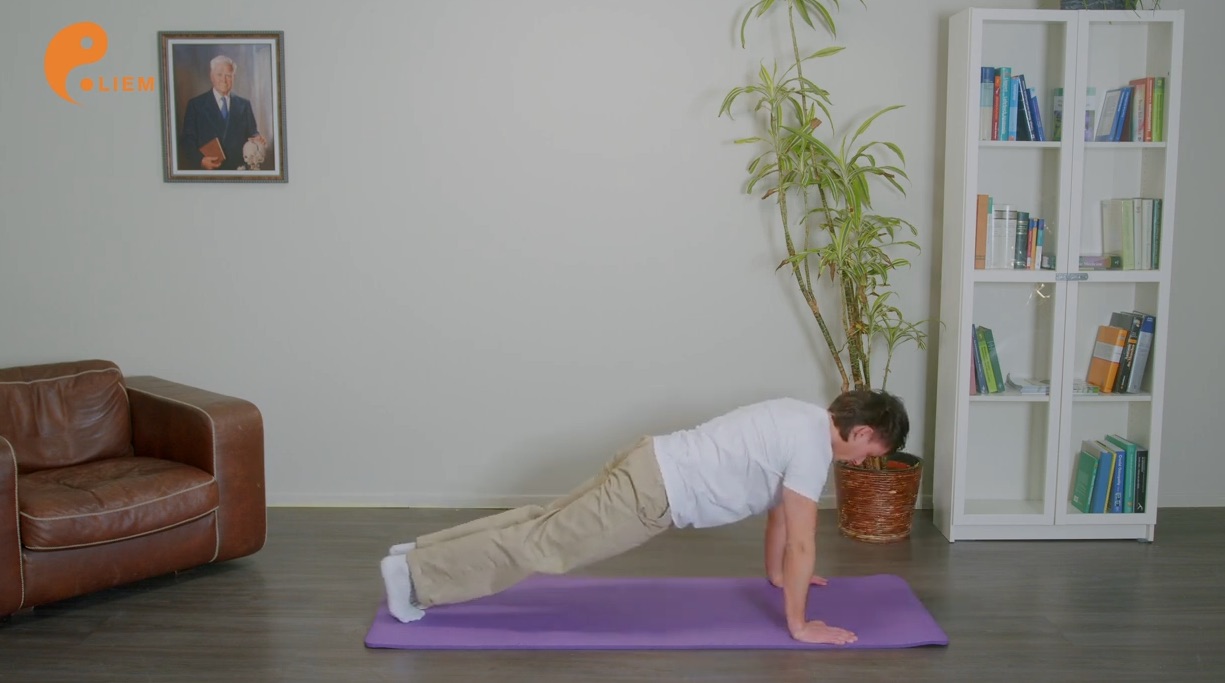Anne Wales graduated from the Kansas City College of Osteopathy and Surgery and then practiced osteopathy in Rhode Island for over 50 years. She then lived in Massachusetts. She was also active in teaching. She edited the "Teachings in the Science of Osteopathy" by W.G. Sutherland and the "Contributions of Thought. The collected writings of W.G. Sutherland" and is often regarded as the direct legacy of W.G. Sutherland.
Anne Wales died on 1 August 2005 at the age of 101.
The following interview, which already appeared in 2/2001 in the journal "Osteopathic Medicine", is a compilation of personal conversations and correspondence between Anne Wales D.O. and Torsten Liem D.O. in the years from 1996 to 2001.
Especially in our fast-moving times, it seems incredible and very humbling that a man should spend over twenty years researching and thinking before he shares his results with the public. Can you say something about the career of Sutherland and his merits for osteopathy.
Dr Sutherland was a journalist, editor of the Herald in Austin, Minnesota, when he first came into contact with osteopathy. He attended the American School of Osteopathy in Kirksville and graduated with the class of 1900. He practised osteopathy in Minnesota from 1900 to 1944. He then began teaching about the human skull. He taught in California from 1944 until shortly before his death in September 1954. He studied the mechanical influences of the articular surfaces of the brain and facial skull on the living human head for several decades. Sutherland's great achievement was to integrate the head into the osteopathic model, so that now not only the feet but also the head and face could be treated osteopathically. There is no longer just one answer to the patient's presentation, but many treatment options, adapted to the patient's needs.
Can you tell us something about Sutherland's courses?
We took courses from Dr. Sutherland in Des Moines, Law, Chicago, Illinois, Providence, Rhode Island and I learned a lot in his classes about the practice of osteopathy, as did many others. His teaching was based on the mechanics of the articular surfaces of the skeletal system, especially the movement of the bones of the skull. He wanted his students to learn to see the anatomy of the joint surfaces in their own mind's eye. Dr Sutherland was a good teacher and an original thinker whose foundations were based on the anatomy of the human body.
G. Sutherland said that the aim of osteopathic treatment is to create a better exchange between all the fluids of the body across all contact surfaces. I understood that the human body is 70% water. Half of this is within the cells. 35% is within the blood system. So, how does air, water and food get into the cells?!
Sutherland saw the cranial cavity as a modified spherical space (the space in which the brain lies). If any joint within it moves, everything else moves too. This is how its shape changes. All the cranial bones move to be able to do this.
You have described to me some Sutherland techniques which differ significantly from Lippincott's explanations published in Sutherland's book "Teaching in the Science of Osteopathy".
From 1945 to 1950 my husband and I attended the Lippincott Cranial Study Group meetings in Moorestown, New Jersey. I have not read Lippincott's written remarks. Howard A. Lippincott studied at the American School of Osteopathy in Kirksville, Missouri with the class of 1918. Rebecca C. Lippincot was in the class of 1923 at the Philadelphia College of Osteopathy. They studied with Dr. Sutherland in Minnesota in 1940 during their holidays. They wanted to pass on through writing what they had learned themselves.
When you taught me the point of balanced ligamentous tension, it was more understandable to me than Lippincott's descriptions. Can you briefly summarise again how you would describe a "point of balanced ligamentous tension" (PBLT) in the skeletal system and when ligamentous tension can occur?
The point of balanced tension in the skeletal system is where you position a joint in such a state of equilibrium that the patient's self-corrective forces move the bone into the correct position. Ligamentary dysfunctions can occur in strains, sprains, subluxations, dislocations and fractures.
What other factors should be applied in the treatment of movement restrictions?
Balanced ligamentous tension, approach, traction, support from the patient's breathing, support from the patient's posture, active support, "fluid drive", steering the "tide" (tidal movement).
At which structures in the body do you set a "point of balanced membranous tension"?
In the cranium, forearm, and between the fibula and tibia. This is supported by techniques that direct the "tide" (tidal movement).
You often use the term "facial drag". Can you explain it a bit more for us?
Standing on both feet with the arms hanging down at the sides, the centre of gravity is in the pelvis and the line of gravity runs through the dens of the axis. "Drag" means a sinking of tissues into the ventral region of the body. Which structures are particularly affected? The diaphragm and all attachments to the diaphragm. The colonic flexures, the liver and spleen capsules, and the pericardium.
The thorax is stabilised by the mediastinal fascia and the neck by the praevertebral fascia. Upwards, the neck muscles of the back and shoulder are attached externally to the os occipitale. The anterior and posterior longitudinal ligaments connect the occipital bone to the cervical vertebrae.
The praevertebral fascia is attached to the processus basilaris of the os occipitale directly behind the tuberculum pharyngeum. The raphe pharyngeum is attached externally to the pars petrosa of the temporal bone and the free edges of the processus pterygoidei mediales. This forms the nasopharynx. The lamina perpendicularis of the ethmoid and vomer articulate with the corpus of the sphenoid....
All together there are a lot of influences that can exert a pull on the outer surface of the skull base and the upper neck area.
Inside the cranium, the squama is a special place. This is where all the duraduplications meet. As taught by Dr Sutherland, the falx cerebri and tentorium cerebelli, the inner layer of the dura mater acts as a reciprocal tension mechanism inside the cranium. The duraduplicities connect in the sinus rectus, house the sinus venosus, which carries venous blood into the foramina jugulares. According to Dr Sutherland, the internal location of the dura mater moves the cranial bones at the sutures so that everything can change shape together in a physiological rhythm. It acts as a passive co-ordinator of movement at the joint-like connections of the cranial bones.
Dr Sutherland also mentions a "point of balanced membranous tension" when treating the facial bones, although no dura is in direct contact there.
Since the facial skull is connected to the base of the skull, it is strongly influenced by the base of the skull, even the bones that do not have a direct connection to the base of the skull, such as the maxilla. Here, the influence of the skull base is transferred via the articular surfaces of the sphenoidal bone to the palatine bone and from there to the maxilla.
What are the influences for the movement of the cranial bones and the sacrum?
The brain lies in a waterbed. Surrounded on the outside by CSF in the subarachnoid space and embedded in the cisterns and CSF on the inside in the ventricles of the brain, like a house in the ocean, a house with open doors. Due to the fluctuation of the cerebrospinal fluid and the inherent motility and brain tissue, the container (meaning the bony skull) continuously changes shape, e.g. in synchondrosis sphenobasilaris. If the midline flexes from the nasal septum to the coccyx, all paired structures go into external rotation and vice versa.
The inner layer of the dura mater is firmly attached to the foramen magnum. Also at the lig. longitudinale posterius and at the upper cervical vertebrae. Then the dura hangs relatively loosely in the vertebral canal up to the second sacral vertebra. Thus the sacrum is part of the inherent mechanism.
Still already said that the nerves would drink the cerebrospinal fluid. The meninges follow the nerves. After leaving the brain, the cerebrospinal fluid becomes tissue fluid. The name changes, but there is a certain connection and continuity.
Please explain the difference between the longitudinal "tide" (fluctuation) and the transversal "tide" (fluctuation)?
The longitudinal fluctuation of the cerebrospinal fluid (LCS) is, in my opinion, a physiological phenomenon. The movement of the structures of the PRM in flexion and extension is related to longitudinal fluctuation.
When the fluctuation appears, I perceive during palpation as if the cisterns and cerebellum are expanding and the fluctuation continues along the falx.
Lateral fluctuation is usually induced by a technique. At any time I could place the pads of the thumbs of my hands on the mastoid process, or place the hands on the great sphenoid wings, the parietal bones or the sacrum and induce lateral fluctuation. This is a process to direct the "tide".
You can compress the 4th ventricle (CV-4) by changing the shape of the posterior fossa, below the tentorium cerebelli. For this, the hands must be in contact with the supraocciput. This produces a certain clinical effect, the same as if I induce an alternating lateral fluctuation.
Once I was asked to treat Dr Sutherland. So I visited him at home. His wife opened the door for me and escorted me to Dr Sutherland. He was already lying down and after greeting him, I sat at the head of the bed. I asked Dr Sutherland what I should do. He told me to put my hands on my head. He took my hands and put them on the processi mastoidei and fingers crossed under his neck. I said nothing. He said nothing. That was how I began. I followed what I felt. His head moved from side to side. After some time he asked me if I felt anything. I said the head was moving from side to side. See well, he said, now bring the movement to a stop. You do that by following the extension until it stops. And then you stay there, he said.
You can do the same with internal and external rotation of the parietal bones. For example, if the patient is having an epileptic seizure and you want to stop it, gently bring the parietal bones or sacrum into internal rotation/extension.
Another time I had a patient with a livid, very swollen hand. It was so painful that I could not touch it. I thought about what I could do. I formed a fist and asked the patient to clasp my fist with his hand. I induced a lateral fluctuation in the hand and a stop. And his skin colour changed. And then I noticed how we breathed synchronously. The swelling of the hand literally disappeared.
What do you think about the described axes of motion of the cranial bones?
In my palpatory experience I often have the impression that the theory of the axes of movement only very inaccurately reflects what is directly perceptible when my hands palpate the skull. And in the beginning, the biomechanical model of the description of the movement of the skull bones made it very difficult for me to come into direct contact with the tissue without projecting this model into my palpation experience.
The bony skull represents a three-dimensional container for the brain. Sutures exist between the individual bones of the skull. All these joint-like connections move in space. If a single bone moves, all the others must also move at the same time. I'm not necessarily thinking of the so-called axes of movement of the individual cranial bones, I'm thinking more of the different joint surfaces of the cranial bones. Everything has to move at once.
These days, there are many discussions about rhythms: Magoun (10-14 min.), Upledger (6-12/min.), Becker 6-10/10 min.), Jealous (2.5/min.). Did Sutherland himself name a frequency of the Primary Respiratory Mechanis? And what do you think about the different rhythms?
I know nothing about any particular frequency of the Primary Respiratory Mechanism and I do not recall Dr. Sutherland counting the rhythm of the fluctuations. Doctors Woods introduced the term "Cranio Rhythmic Impulse" and counted the rhythm.
What do you think is special about an osteopath?
As an osteopath, you examine the patient's body through your hands. You study the anatomy so that you can understand how the body works and what the problem is that brings the patient to you. You want to understand the problem before you prescribe any kind of treatment. You want to understand what his complaints are, the history of his complaints and then you want to find out what the problem is behind his complaints.
Anne, how is it that you are still so young at your advanced age. Is that an osteopathic secret?
I have received a lot of treatment since I went to college in 1922. I started practising osteopathy in 1927 and finished my practice in 1977. I try to respect my physical limitations and move within them. I still treat my family, friends and close colleagues, which means I have one to three treatments a day.




